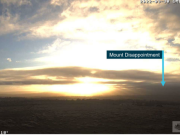Citing several recent incidents of improper ground deicing of aircraft later involved in incidents, the European Aviation Safety Agency (EASA) is calling for renewed efforts by operators to ensure that ground personnel are aware of the importance of their deicing efforts.
In Safety Information Bulletin (SIB) 2018-12, issued late last week, EASA recommended that all operators “ensure that training of the involved personnel is conducted in accordance with the applicable procedures, and check their competency.”
In addition, EASA recommendations called on operators to allow adequate time and visibility conditions for deicing personnel to properly deice aircraft and to conduct post–deicing checks. In addition, EASA said that national aviation authorities should consider the recommendations in conducting their own oversight programs.
In particular, EASA cited a Nov. 7, 2016, serious incident in which an Avro RJ100 crew experienced strong vibrations after takeoff from Gothenburg/Landvetter Airport in Sweden. After returning to the airport, an inspection found ice on the airframe, “despite the fact that deicing had been ordered before takeoff,” the Swedish Accident Investigation Authority said.
EASA said the SIB is intended as a reminder to operators “that personnel involved in the process of ground deicing of aircraft should be aware of the importance of conducting effective deicing procedures due to the direct impact on the safety of the aircraft. In particular, once it has been determined that the aircraft needs to be deiced, it is paramount that, after spraying the deicing fluids, the post deicing check is carefully conducted to identify if there is any remaining contamination and repeated deicing treatment followed by another post deicing check is needed.”



